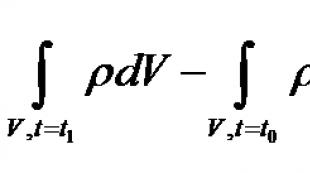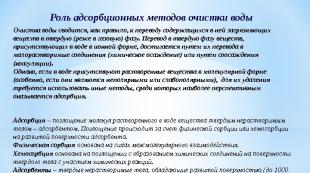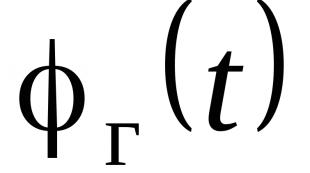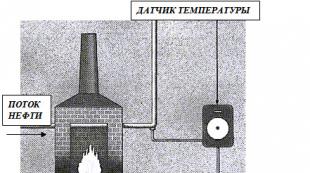Composition of household chemicals. Classification of household chemical goods. Quality requirements Methods of “alternative” cleaning
HOUSEHOLD CHEMICALS
chemical sub-branch industry that develops and produces chemicals. Wed for household purposes. The latter are also produced at enterprises of other industries (for example, in metallurgy, light industry and food industry). Products B. x. include: synthetic detergents; textile auxiliary; bleaching, bluing, starching agents (see. Detergents); , stain removers, adhesives; car care products (see. Car cosmetics) and the fight against household insects and rodents (see, for example, Pesticides, Repellents); other media (see Antistatic agents, Antiscale agents, Deodorants, Putties, Mastics, Odorants, Shampoos and etc.).
Aerosol packaging: 1 cap; 2-spray head; 3-valve; 4-cylinder; 5-siphon tube.
Active ingredients in B. chemicals are, as a rule, not used in their pure form; Usually, on their basis, wettables, emulsion concentrates, solutions, granules, microcapsules, etc. are prepared. The preparations also include liquid or solid diluents, surfactants, special agents. (, thickeners, etc.).
Products B. x. released in different packaging. To increase the effectiveness of drugs, many packages are given dil. functional devices (for supplying media, opening or storing packaging, etc.). The so-called aerosol packaging - cylindrical a hermetically sealed container made of aluminum, tin or glass, equipped with a valve, will spray. head with a safety cap and siphon tube (see figure). The cylinder is filled with a solution of the active substance in alcohol, kerosene or other solution and liquefied inert volatile gas - propellant(freon, a mixture of propane and butane, CO 2, etc.). When pressed it will spray. The valve head opens, and under the pressure of the propellant vapor (at room temperature 3 times or more higher than atmospheric) it sprays through the siphon tube, the valve and the hole in the hole. the head is pushed out of the container. In this case, the propellant evaporates almost instantly, and a dense cloud of many tiny (several microns in size) liquid or solid particles of the active part of the drug is formed in the air, the consumption of which is approx. 1 ml/s. Sometimes the drug from cylinders is given in the form of a paste. The propellant-free packaging is designed in almost the same way, where liquid from a cylinder is sprayed by air pressure created by the fur. dosing pump. For many chem. Wed-in household aerosol packaging, unlike other packaging, max. convenient and economical: allows you to evenly apply the drug to the treated surface, significantly reduces its consumption, makes it easier and faster to use. World output of goods B. x. in aerosol packaging is approx. 5 billion cylinders per year, including 500 million in the USSR (1985).
In all countries, the use of chemicals. Weds for household purposes are officially regulated: they may. used only with permission from competent organizations, taking into account effectiveness, toxicity, long-term consequences of use and safety for the environment. According to the degree of danger, B. x. goods. conditionally divided into safe (for example, cleaning products), relatively safe (for example, ), poisonous (for example, products against household insects and rodents, certain stain removers, adhesives and car preparations) and flammable (for example. , preparations in aerosol packaging, a number of polishes).
In the process of use, B. x. “work” in close contact with humans and the environment, entering the atmosphere, sewerage systems, water bodies, soil adjacent to residential areas, and partially remaining in a person’s home. To reduce the harmful effects from the use of chemicals. Wed-in household use, a long-term comprehensive program of measures has been developed, mainly. The directions for implementing the cut come down to the following: 1) improving the management of the production and assortment of agricultural products; creation of the so-called “pure” drugs, which, when consumed, do not produce unwanted emissions into the environment or form them in the form of chemicals. compounds that quickly decompose into harmless components; expansion of chemical production Wed in containers with functional devices, as well as in reusable packaging, in particular propellant-free; 2) development of a system for the collection and return of secondary raw materials (polymer, glass, aluminum and other containers); improving the culture of consumption of goods B. x. by improving public information about methods of their use, storage features, etc.
World chemical production average household use is approx. per year. 45 million tons, including in the USSR - approx. 5 million tons (1985).
Lit.: Chal Mer s L., Chemicals in everyday life and industry, trans. from English, Leningrad, 1969; Yudin A.M., Suchkov V.N., Chemistry in everyday life, 6th ed., M., 1982; Yudin A.M., "Chemical industry", 1983, No. 7, p. 25-27; Directory of merchandising of non-food products, vol. 3, M., 1984; Yudin A.M., Suchkov V.N., Korosteli n Yu.A., Chemistry for you, 3rd ed., M., 1985. A. M. Yudin.
Chemical encyclopedia. - M.: Soviet Encyclopedia. Ed. I. L. Knunyants. 1988 .
See what "HOUSEHOLD CHEMICALS" is in other dictionaries:
Household chemicals - get a working Eurodom discount coupon on Akademika or buy profitable household chemicals with free delivery on sale at Eurodom
Household chemicals for property care: clothing, premises, cars. Household chemicals also include disinfectants, repellents and glue. More than half (in monetary terms) of household chemical goods... Wikipedia
household chemicals- buitinė chemija statusas T sritis chemija apibrėžtis Chemijos pramonės šaka, kurianti ir gaminanti buityje naudojamus chemines medžiagas ir gaminius. atitikmenys: engl. domestic chemistry; hosehold chemistry rus. household chemicals … Chemijos terminų aiškinamasis žodynas
A sub-sector of the chemical industry that produces detergents and cleaners, textile auxiliaries, car care products, household insecticides, and other household chemical products... encyclopedic Dictionary
Household chain saw- – household chain saw. [GOST R 50692 94 (ISO 6531 82)] Term heading: Tools Encyclopedia headings: Abrasive equipment, Abrasives, Highways, Automotive equipment ... Encyclopedia of terms, definitions and explanations of building materials
CHEMISTRY, and, women. 1. The science of the composition, structure, properties of substances and their transformations. Inorganic x. Organic x. Physical x. (based on general principles of physics). 2. what. The composition itself, the properties of substances and their transformations. X.… … Ozhegov's Explanatory Dictionary
AND; and. [from Arabic alchimia (al)chemistry] 1. Scientific discipline (field of natural science) that studies substances, their composition, structure, properties and mutual transformations. Applied x. Inorganic x. Organic x. Theoretical x. Analytical x.... ... encyclopedic Dictionary
chemistry- And; and. (from Arabic alchimia (al)chemistry) 1) a) Scientific discipline (field of natural science) that studies substances, their composition, structure, properties and mutual transformations. Applied chemistry. Inorganic chemistry. Organic chemistry. Theoretical chi/mia.… … Dictionary of many expressions
household chemicals- household chemicals … Dictionary of Russian abbreviations
A distinctive feature of alcohols, the hydroxyl group at a saturated carbon atom, is highlighted in red (oxygen) and gray (hydrogen) in the figure. Alcohols (from Lat. ... Wikipedia
Household chemicals- a sub-sector of the chemical industry that develops and produces household chemicals.
Most often, the term “household chemicals” in everyday speech refers to the household chemical products themselves, manufactured in chemical factories.
Household chemicals include chemicals for caring for property: clothing, premises, cars. Household chemicals also include disinfectants, repellents and glue.
More than half (in monetary terms) of household chemical goods are laundry detergents: washing powder, washing gel, fabric softener and laundry aids. The second largest category (about a quarter of the market) is hand and dishwasher detergents. Next come cleaning agents, disinfectants and bleaches. In fourth place is windshield washer for cars.
Household chemicals include laundry soap, sales of which are declining every year. With the help of household chemicals we can do housework and more.
Encyclopedic YouTube
1 / 3
✪ Household chemicals and symptoms of allergies, asthma and eczema. The best smell is unscented. Research Review
✪ Bottling lines for household and industrial chemicals, technical liquids and oils - NPP Spetspromavtomat
✪ How to build sales of chemicals to car services
Subtitles
Categories of household chemicals
Detergents. The most popular detergents are:
- Soap;
- washing powders;
- personal hygiene products containing surfactants;
- washing gels;
- dishwashing detergents;
- car wash products;
- floor cleaning products.
Cleaners. Cleaning products include:
- Cleaning powders;
- carpet cleaning products;
- toilet and bath products;
- pipe cleaners;
- car cleaning products;
- all-purpose cleaners;
Motor and transmission oil for cars
Disinfectants.
Air fresheners and fragrances.
Repellents.
Whiteners and stain removers.
Chemical products for the care of clothing and footwear.
Manufacturers of household chemicals
The world's largest manufacturers of household chemicals are Procter&Gamble, Henkel, Reckit Benckiser, and Unilever.
Composition of household chemicals
Depending on the purpose of the product, the composition contains:
- Surfactants (surfactants);
- Phosphates;
- Sulfates;
- Carbonates;
- Chlorides;
- Propylene;
- Acids;
- Aldehydes.
Use, storage and disposal
Many household chemicals products, widely used in daily use, contain chemicals that are harmful and dangerous to human health and life. Therefore, it is necessary to strictly follow the instructions contained on the packaging of the product used.
Most often, the main conditions for storing household chemicals are protection from direct exposure to light, compliance with temperature conditions and the maximum level of room humidity. A complete list of storage conditions is mandatory on each package of the product.
Before using any product, you must carefully study the instructions for its use and recommendations on safety rules that must be followed. The storage location of all toxic drugs should be absolutely inaccessible to children. Do not store unknown substances in the house, as well as any cans or packaging that are not labeled with the contents.
Even if the chemical is expensive and there is some left at the bottom, do not pour it into a smaller container from another drug. Your confidence that you remember exactly what kind of money is stored in a particular bank may turn out to be erroneous and cost you and your loved ones dearly. All chemicals must be stored separately from food products to completely eliminate the possibility of poisoning.
There are companies involved in the disposal of unused household chemicals. If necessary, there are ways to safely dispose of them.
Detergents and cleaning products are classified as everyday goods. When making a purchasing decision, consumers pay attention to price, brand, packaging, but pay much less attention to the composition of household chemicals.
When doing laundry, cleaning, washing dishes and windows, people use industrial products every day in their everyday lives. It is impossible to imagine our life without synthetic detergents (SDCs), cleaning powders or soaps. However, in recent years, one can increasingly hear discussions about the dangers of their components. To understand this issue, let’s consider the composition of home cleaning products in detail.
Main Components
Most household chemicals do contain potentially dangerous elements, such as:
- Surfactants (surfactants). They are a necessary component of all cleansing substances. They are the ones who promote cleansing due to molecules of a special structure. Thanks to the surfactant, fat particles combine with water and are washed out. High concentrations disrupt the lipid barrier on the skin and can provoke an allergic reaction.
- Phosphates and phosphonates. Used as water softeners. Extremely adversely affect the environment. Getting into water bodies with wastewater, they cause abundant flowering and, as a result, the death of the inhabitants. In humans, they can cause skin diseases (eczema, atopic dermatitis), an allergic reaction, and irritation of the respiratory system. Currently, more and more manufacturers are replacing phosphates with less hazardous zeolites and polycarboxylates.
- Compounds containing chlorine and its derivatives. Found in bleaches and mold-killing products. Many substances containing chlorine have been banned in European countries since 1987, as their connection with heart and vascular diseases has been proven. In addition, they may irritate the mucous membranes of the ENT organs.
- Formaldehyde. Used as a preservative. Carcinogen.
- An aqueous solution of ammonium hydroxide (ammonia) is found in window cleaning fluids. Its vapors have an irritating effect on the respiratory system.
- Nitrobenzene is a toxic organic substance. Found in furniture polishes. May cause shortness of breath and vomiting.
- Methylphenols and phenol. Used as potent antiseptic additives. Toxic. Can cause disruption of the functioning of internal organs.
Security measures
When purchasing household chemicals for home care and laundry, pay attention to their composition. Choose samples with a surfactant and phosphate content of no more than 5%, hermetically packaged, without a pungent odor. Do not mix different products. Follow the storage and disposal regulations for these products.
Note! Work with household chemicals must be carried out using personal protective equipment.
It should be remembered that all of the above compounds are contained in quantities prescribed by regulatory documents. However, there are rules and regulations for the use of these products that you should know in order not to harm your health.
The household chemicals market is represented by the following groups of products:
Adhesive materials
Abrasives and tools
Washing and washing products
Cleaning products (for removing stains, cleaning clothes, household items, home care and car care)
Paint and varnish products
Means for increasing crop yields
Disinfectants and sanitary products
Various household chemicals
Let us characterize these groups.
Adhesive materials are substances whose solutions are capable of forming films that glue various materials together. Adhesives are used not only for gluing wood, paper, plastics, glass, porcelain, but also for the preparation of adhesive paints, the production of abrasive tools and for other purposes. Materials stick together when the adhesive hardens as a result of evaporation of the solvent, heating, or chemical action of the adhesive with the hardener.
Adhesives are divided into:
Adhesives of natural origin (hide, bone, caseilin)
Adhesives of vegetable origin (starch-based (dextrin, wallpaper), resin-based (rubber, nitrocellulose)
Adhesives of mineral origin (silicate)
Synthetic adhesives (phenol-formaldehyde, urea-formaldehyde, epoxy, etc.)
Abrasives are hard granular materials used for grinding and polishing various surfaces (metal, wood, etc.), as well as for sharpening and straightening tools. Abrasive materials are cut and scraped with sharp edges of the grains of the convexity of the surface being treated, thereby leveling it.
Assortment of abrasive materials: pumice, emery, quartz, crocus.
Assortment of abrasive tools: grinding wheels, whetstones, sandpapers, abrasive pastes, sharpeners.
Washing and cleaning products include detergents and laundry aids.
Detergents include synthetic detergents (SDC), laundry soap and soap-containing detergents.
Synthetic detergents (SDCs) are mixtures of organic surfactants (20-40%) and beneficial additives.
Laundry soap and soap-containing laundry detergents are a complex chemical product, the main part of which is sodium and potassium salts of organic acids (fatty, synthetic, resin, etc.). To obtain laundry soap, fats, fat waste, synthetic fatty acids, resin and naphthenic acids, rosin, and alkaline substances are used.
Washing aids include water softeners (well-soluble alkaline agents in water in the form of powders and briquettes containing soda ash, sodium phosphates, sodium silicate (liquid glass), bleaches (peroxide salts and optical brighteners in the form of powders, tablets and liquids), bluing agents (ultramarine blue, indigo carmine blue, methylene blue), starching and other agents.
Cleaning products include preparations that are used to remove dirt from dishes, cutlery, plumbing equipment, windows, doors, and floors. Currently, these products are produced in a wide range in the form of powders, pastes, liquids, emulsions, special wipes and in aerosol packaging.
The main types of paint and varnish products include: driers, drying oils, varnishes, polishes, pigments, paint compositions (ready-made paints), paint solvents.
Mineral fertilizers are natural or artificial substances produced at chemical plants, most often in the form of various salts, which are widely used in agriculture.
Simple fertilizers include: nitrogen, phosphorus, potassium.
Complex ones include: mixed, complex and combined.
Microfertilizers, bacterial fertilizers.
Pesticides include agents for controlling pests (insecticides) (karbofos, nitrophen, carbothion, chlorophos, anabasine sulfate), and diseases of crops, weeds (herbicides), disinfectants (bleach, chloramine, etc.), agents against fungi (fungicides ) (oxychloride, Bordeaux mixture, green oil concentrate, iron and copper sulfate).
Various household chemicals: borax, hexa, sulfuric acid, hydrochloric acid, candles, paints for home dyeing of fabrics.
Currently, the chemical industry produces a large number of different synthetic detergents. Of greatest practical importance are compounds containing a saturated hydrocarbon chain of 10...15 carbon atoms, one way or another associated with a sulfate or sulfonate group.
The production of synthetic detergents is based on cheap raw materials, or more precisely on oil and gas products. As a rule, they do not form calcium and magnesium salts that are poorly soluble in water.
Consequently, many synthetic detergents clean equally well in both soft and hard water. Some products are even suitable for washing in sea water. Synthetic detergents act not only in hot water, as is typical for laundry soap, but also in water at relatively low temperatures, which is important when washing fabrics made from artificial fibers. Finally, the concentration of synthetic detergents, even in soft water, can be much lower than soap obtained from fats.
Washing powders, which form the main part of SMS, can be divided into the following groups:
Actually washing products: universal (for all types of fabric): for washing wool, silk and synthetic fabrics; for pre-soaking laundry.
Complex action products that can be used to additionally treat the fabric at the same time as washing, for example, tint and disinfect it. This is more often used when hand washing.
Bleaches. They help remove stains from fabrics that remain after washing, and also give the laundry extra whiteness.
Bluing agents.
Antistatic treatment agents. They are used for the final rinse of washed items made of nylon, nylon, acetate fiber and wool.
Softeners. They are used during the final rinsing of products and give fabrics made from cotton, linen and viscose fibers a pleasant velvety feeling.
Finishing agents. They impregnate fabrics after washing to restore their previous properties, weakened by washing. For example, in connection with the removal of part of the starch, as well as substances that promote water repellency, starching and water-repellent agents are used. This group also includes preparations that have dirt-repellent properties and make fabrics wrinkle-resistant.
Unlike soap, SMS has great cleaning power, hygiene, cost-effectiveness and a number of other advantages. When dissolved in water, they are capable of wetting the surfaces being treated better than soap, in other words, increasing the surface activity of water, being stronger surfactants, and, in addition, grinding the contaminant into particles that are held in suspension in an aqueous solution and do not settle on the item being processed.
Soaps have undergone very great changes over the past fifty years. Trough. New detergents are currently used for its production. They turned out to be fatty alcohol sulfates and alkylbenzenesulfonates, which began to be used in Germany during the Second World War. Today's detergents are a mixture of substances. Their components are surfactants, complexing agents, optical illuminators, brighteners and various auxiliary substances. They contain soap in very small quantities, and not as a detergent, but as a defoamer.
Surfactants, although they do not quantitatively constitute the bulk of the mixture, are critical to the quality of the wash. Their purpose is to reduce the surface tension of water, improve the wettability of fabric and increase the emulsification of foaming agents.
Modern detergents contain 30-50% pentasodium di (or tri) phosphate (for example, Na5 P3O10 * 6H2O) and some polyphosphates. They bind doubly and triply charged metal ions so firmly that they eliminate gray deposits on laundry and streaks of dirt in bathrooms associated with the formation of lime soap and other poorly soluble compounds.
When using them, laundry can be washed even without pre-soaking. In addition, polyphosphates enhance the effect of surfactants. Adsorbed on fibers, polyphosphate molecules repel dirt particles from the surface of the fabric and, due to electrostatic repulsion, contribute to their distribution in the washing solution. However, they also have a significant drawback - they pollute the environment. Polyphosphate hydrolysis products accumulate in wastewater, and since phosphorus is an essential component of plant nutrition, an undesirable concentration of these nutrients is created.
To ensure that washed clothes have a pleasant smell, perfumes are added to all detergents.
All-purpose detergents can be used to wash items made from all types of fabrics, but items made from synthetic, silk and woolen fabrics are still best washed with liquid detergents.
The following universal detergents are available for sale: powders “Lotos”, “Lotos-A”, “Lotos-automatic”, “Biolan”, “Losk”, “Tide”, “Ariel”, “OMO”, “Myth”, “ Pemos”, “April”, “Stork”, “Mix”, “Dosya”, etc.; pastes “Aelita”, “Lily of the valley”, “Surprise”, “Eridan”, “Fairy”; liquids "Asta", "Seperal", "Ex".
Among SMS with universal action, there are powders containing enzymes (enzymes) - “Biolan”, “Bio-est”, “Biomax”. They cannot be used to wash items made from natural silk and wool.
When washing with synthetic detergents and then drying, fabric items (towels, diapers, etc.) may become hard to the touch. To eliminate it, softeners are used. This is achieved by rinsing in water with the addition of special compounds. The most well-known softeners are compounds of quaternary ammonium bases.
Softeners, which are available in the form of a solution or paste, also include optical brighteners and fragrance. In addition, products intended for softening also have an antistatic effect. Domestic products are “Polyen”, “Iron”, “Mag”, and “Amelia”, and imported products include “Vanish”, “Lenor”.
It is impossible to imagine the life of a modern person in everyday life without the use of a lot of household chemicals:
- washing powder that effectively washes things - most families use Myth, Sorti, Tide, Ariel, Denis, Persil, Pemos, Dosya, Lotus, Stork, Eared nannies
- various types of cleaning products and detergents in the kitchen or bathroom: Pemoxol, Biolan, Pemolux, Domestos, Ac.
- for washing dishes: Sorti, Feri, Myth, Biolan, etc.
- window and mirror cleaners, air fresheners, carpet cleaners, and insect repellents.
Household chemicals contain many harmful substances that not only harm the fragile ecosystem, but also have a very detrimental effect on human health, leading sooner or later to chronic human diseases. Manufacturers claim that the amount of harmful substances in household chemical products is minimal, but they “forget” to mention such a fact as the cumulative effect of all components, which causes real harm to health:
- Only 3% of the population carefully study the composition of purchased household chemicals and buy hypoallergenic products
- 50% know that these products are harmful to health, but due to their effectiveness and time savings, they choose them
- 50% don't think twice This is why they trust the ubiquitous advertising of manufacturers.
If you take care of your health and want to minimize the impact of dangerous chemical compounds, buy the safest household chemicals possible and carefully read the composition and instructions. The most hazardous chemical compounds often used in household products are:
- Chlorine, organochlorine compounds - in cleaning products and detergents
- Phosphates and phosphonates- in washing powders
- Surfactants - in detergents and cleaning products
- Formaldehyde - in dishwashing detergents, carpet cleaners (formaldehyd or methanal, methylene oxide, oxymethylene)
- Hydrochloric acid - in cleaning products
Also, cosmetics - shampoos, creams, decorative cosmetics contain a lot of substances that negatively affect health, which manufacturers are silent about (see). One of the studies by American scientists found that the abuse of household chemicals and cosmetics affects women’s reproductive health, disrupting the functions of the endocrine system and bringing menopause closer (see)
Chlorine and organochlorine compounds - hypochlorite (hypochlorite) or sodium hypochlorite (sodium hypochlorite)
Chlorine and its compounds are found in many products:
- bleaches - ACE (chlorine bleaches)
- detergents for dishwashers and hand washing dishes (Prill)
- disinfectants - Belizna, Comet (gel or powder with chlorinol), Domestos (a very highly concentrated product, practically a “poison” for the respiratory system, cannot be used in everyday life)
- anti-mold products
In the European Union since 1987, some chlorine-containing compounds have been banned or their use is limited because they can cause: 

Chlorine has an irritating effect on the mucous membranes of the respiratory tract and eyes, leading to primary inflammatory changes, which are easily followed by a secondary infection. At low and medium concentrations of chlorine, poisoning is accompanied by the following symptoms:

Mild household poisoning occurs when using detergents and cleaning products and recovery occurs within 3-7 days. However, with a low concentration of chlorine and its compounds, acute poisoning does not occur, the negative effect on health is not noticeable to a person, but if contact occurs regularly, changes in the respiratory tract occur and the person does not understand why he suddenly developed hoarseness, catarrh of the upper respiratory tract, chronic obstructive pulmonary disease (COPD), chronic bronchitis, bronchial asthma or pulmonary tuberculosis develops (note that by the age of 30, almost the entire population of Russia is considered infected with Koch's bacillus, and such slow poisoning can contribute to the development of the disease).
Not all housewives know that sulfur dioxide, ethylene glycol and chlorine, which are part of household disinfectants, are chemical warfare agents in the military industry. At the enterprises producing these detergents, workers wear protective clothing and respirators!!! The packaging of products usually indicates not just chlorine, but chlorine-containing compounds, which are the active ingredient, for example sodium hypochlorite (sodium hypochlorite) or simply hypochlorite (hypochlorite), and when using these household chemicals, chlorine is also released.
The risk of irritation of mucous membranes and the development of diseases of the respiratory system increases when using chlorine-containing products in winter in small (bathroom, toilet), poorly ventilated rooms, as well as in winter water parks and swimming pools.
Surfactant
Surfactants (surfactants) today are found in all cleaning products - soap, washing powders, dish and room cleaners, etc. Why do they clean surfaces so well? They promote the connection of water molecules with fat molecules, so these substances also break down the protective skin fat of a person. According to the standards established by GOST, the protective layer of the skin after using such products should independently restore up to 60% within 4 hours after using the surfactant, but this does not happen.
All surfactants are divided into:
- Anionic surfactants (a-surfactants) are the most highly soluble in water, cheapest, most effective and most harmful to nature and the human body. They can accumulate in significant concentrations in the body.
- Cationic surfactants - they are less harmful and have bactericidal properties.
- Nonionic surfactants- 100% biodegradable
Anionic surfactants are often contaminated with nitrosamines, which are carcinogenic, and this is not stated on the label. Most modern household chemicals have a high concentration of anionic surfactants; when used frequently and abundantly in everyday life, this leads to:
- severe degreasing and dehydration of the skin, which leads to premature aging
- in combination with phosphates, which promote more intense penetration of a-surfactants through the skin, they are absorbed into the blood, reducing immunity.
- Anionic surfactants accumulate in organs: in the liver - 0.6%, in the brain - 1.9% of the total amount of surfactants exposed to the skin and other organs.
- these substances have a toxic effect: they disrupt the functions of liver cells, which leads to an increase in cholesterol levels and, as a result, increases the risk of heart attacks and strokes; in the lungs they can cause emphysema, hyperemia, and disrupt the transmission of nerve impulses in the central nervous system and peripheral nervous systems.
- the risk of developing allergic reactions increases.
When using any detergents (both for washing dishes and washing clothes), surfactants penetrate and accumulate in the body. Even rinsing dishes 10 times with hot water does not free them from chemical compounds. In order to somehow reduce their harmful effects, you should purchase products with an amount of a-surfactants of no more than 5%.
Modern packaging of washing powders - gel capsules - are such bright and pleasant-to-touch packaging that they attract small children, reminiscent of a toy, candy, or juice box. In the United States, 1 child is hospitalized every day with poisoning after exposure to, inhalation or ingestion of such products (see). Splashing and swallowing the laundry gel capsule causes coughing, choking, conjunctivitis, eye burns, and vomiting in children.
BLACK LIST
|
|
WHITE LIST
|
   |
Phosphates and phosphonates
In the former USSR, back in the 60s, the influence of SMS (synthetic detergents) on human health and the environment was studied, and the results coincided with the conclusions of similar studies by European specialists.
However, the conclusions drawn were different:
- European countries have banned some harmful substances completely, while others have sharply limited their permissible content in washing powders.
- in our country, these alarming facts were kept silent and hidden not only from society, but also from specialists, and to this day there is no control or ban on the inclusion of harmful substances in products not only for adults, but also for children.
It was found that phosphorus (phosphate) compounds disrupt the acid-base balance of skin cells, that is, they destroy the natural defenses; they interact with lipid-protein membranes, penetrating the structural elements of the cell and causing deep, subtle changes in biophysical and biochemical processes, which leads not only to:
- dermatological diseases (,)
- allergic reactions, respiratory tract damage, but also
- Penetrating through the skin, phosphates partially penetrate into the bloodstream and affect the content of hemoglobin, protein, and blood serum density, which in turn leads to
- dysfunction of the liver, kidneys, skeletal muscles, as well as
- metabolic disorders, severe poisoning, exacerbation of chronic diseases
| Sodium phosphate |
Calcium phosphate | Potassium phosphate | |
| Applicable |
|
|
|
| What is it for? |
|
Cleans teeth more effectively, so it is included in toothpastes | For softening water in shampoos, liquid soaps, etc. |
| Interesting Facts |
|
|
|
In addition, when phosphates enter natural bodies of water, they cause water blooms, since they serve as fertilizer for algae, and this leads to the death of living organisms in rivers and lakes. Today, many manufacturers refuse to add phosphates to household chemical products, and introduce polycarboxylates and zeolites as more environmentally friendly substances.
Phosphate content in our usual washing powders
In all popular and advertised brands of washing powders sold in Russian supermarkets, the phosphate content is indicated as 15-30%, but often their level is more than 40%. Why is this dangerous for human health when regularly used for washing clothes?
Phosphates in such quantities are practically not rinsed out of synthetic, cotton and woolen fabrics - that is, from all that modern people wear. To rinse them, you need to rinse the fabric 8-10 times in HOT water, and modern automatic washing machine programs rinse mainly in cold water and no more than 2-4 times!!!
As mentioned above, the presence of phosphate additives in washing powders enhances the toxic effects of a-surfactants, causing a slow destruction of the fragile chemical balance of the human body, causing first minor changes, subtle or even unnoticeable, then more significant.
And the saddest thing is that none of us associate the deterioration in general health, the appearance of chronic diseases by the age of 40-50, with the influence of household chemicals. And the manufacturers of these products are not interested in disseminating negative information about the dangers of their products to the health of the nation; for the same reason, there are no reliable studies over a long period of time on a large group of people about the dangers of using such products in everyday life.
In order to somehow protect yourself and your loved ones from the influence of phosphates, you should:
- Rinse clothes and underwear in hot water more than 8 times.
- Wear gloves on your hands not only to protect your delicate skin, but also to protect your body from harmful substances.
- When washing, try not to be in the same room and ventilate the apartment while doing so.
- After washing, be sure to wet clean the apartment.
- Choose detergents with surfactants and phosphates of no more than 5%, certified, without a strong odor, hermetically sealed
- Use a minimal amount of any disinfectant
- Never mix different disinfectants
- Wear a mask and gloves when cleaning and washing.
Other harmful compounds hazardous to health
- sodium hypochlorite - sodium hypochlorite, used in bleaches. Since this substance is very unstable, it easily releases chlorine, the dangers of which are described above.
- Petroleum distillates- used in polishes for metal surfaces, even short-term exposure leads to, and frequent and prolonged exposure leads to skin diseases, disruption of the nervous system, visual organs, and kidneys.
- Nitrobenzolum, nitrobenzine, nitroben-zene, nitrobenzene- used in furniture and floor polishes. It causes birth defects in children, causes cancer, vomiting, shortness of breath, skin discoloration, and even causes death.
- Ammonia— liquid ammonia, used in glass cleaning products. Causes headaches, respiratory tract and eye irritation.
- Formaldehyde as a preservative in food is a carcinogen and causes irritation to the respiratory tract, skin, eyes, and throat.
- Phenols and cresols- as bactericidal additives, they are very toxic, causing dizziness, diarrhea, impaired liver and kidney function, and loss of consciousness.
Before purchasing household chemicals, you should familiarize yourself with the composition indicated on the packaging and read the instructions. Try to avoid using chemical products with the following symbols:
 |
 |
 |
 |
All cleaning agents and detergents, their fumes cause coughing, inflammation of the respiratory tract, and redness if they come into contact with the skin. inflammation. |
On solvents, paints, varnishes - these are very caustic and toxic substances. |
In products for removing blockages and cleaning sewer pipes, these are acids and alkalis. Causes burns upon contact with skin. Work only with gloves. |
For the environment - terrestrial and aquatic animals, vegetation. |
How to make your own safe cleaning products
For dish washing
Bag of soap - All of us have a lot of soap leftover if we put 2-3 soaps in a bag made from an old microfiber cloth (take a piece of fabric measuring 10x10 cm and sew it, putting the soap in it). This is very convenient and the dishcloth turns out to be self-soaping.
Dishwashing gel- you can make it yourself, it will be much cheaper and less harmful than using industrial products. You will need:
- half a liter of hot water
- laundry soap – 25 gr.
- vodka - 1 tbsp. spoon
- glycerin - 4 tbsp. spoons
Grate the soap, add hot water, stir well, let cool. Then add vodka and glycerin and stir thoroughly. The result is a homogeneous liquid with foam that needs to be removed. Then pour the liquid into a container from the same Fary (any bottle of dishwashing gel with a dispenser). At first, the product will be liquid, then it will thicken a little and its consumption will be slightly higher than that of industrial gels, but it is a safer and cheaper dishwashing detergent.
For cleaning kitchen and bathroom surfaces and washing kitchen utensils
You can make this paste yourself with some effort. You will need: 
- soap (preferably 72% laundry soap, but baby soap is also possible) - 100 g
- hot water – 200 ml
- mixer
- baking soda - 250 gr
- essential oil for scent (optional)
- You can add mustard to the finished paste, but only directly when washing greasy frying pans, frying pans, and pots.
First, grate the soap
Second, add hot water and beat with a mixer until thick foam, it will be sticky and stick to the mixer (no problem), beat for 10-15 minutes.
Third, add baking soda to the mixture; it will break up the sticky mixture and give it a pleasant consistency. It is better to store the cleaning mixture in a glass jar with a lid to prevent it from drying out (photo 1). 
- If you want the mass to be more liquid, then
- Add more water to the whipped soap (1.5-2 cups)
- A whole pack of baking soda (500g)
- As a result, the mass will be like this (photo 2).
Since the smell of laundry soap is not very pleasant, if you wish, if you are not allergic to essential oils, you can add any favorite scent. As for washing greasy kitchen utensils, adding mustard helps eliminate grease, but it should not be added to the container with the main mass, since it quickly deteriorates, it should be used directly.
Soda Ash
This is an effective, economical, natural, safe cleaning product! It differs from baking soda in varying degrees of alkaline activity. Soda ash is a stronger alkali (pH = 11), while baking soda is a weaker alkali (pH 8.1). Baking soda is a universal washing, cleaning, grease remover and water softener. Can be safely used for:
- washing floors
- cleaning bathtubs, sinks, tiles
- hand wash, machine wash (soaking linen and cotton fabrics)
- cleaning enamel, ceramic, earthenware dishes
- to prevent scale and soften hard water
But this soda, unlike baking soda, is more aggressive, so in its pure form it can only be stored in places inaccessible to children, away from food products; when using it, be sure to wear rubber gloves.
Just baking soda or forgotten laundry soap
As for the laundry soap we have forgotten, this is the most natural product of modern household chemicals, you just have to get used to the not very pleasant smell. And baking soda is a truly natural remedy that copes with any stains on any surfaces; it cleans perfectly:

Gel for washing clothes
For the gel you will need:
- laundry soap (or baby soap) - 50 g
- 1 liter of water
- soda ash 45 gr.
- optional essential oil
For air conditioner: If you add wine vinegar when rinsing (125-250 ml), you can soften the fabric and get rid of soap residue. You can make the following conditioner: for 1 liter of vinegar, 5 drops of essential oil (lavender, mint).
Grate the soap, add boiling water to the soap shavings, stir thoroughly. Then add soda ash, it is very important to mix well, after cooling you will get a thick gel. Soda will give the liquid a jelly-like state and a pearlescent tint. After cooling, you can add (optional) essential oil of your choice. Pour into some container or canister. If the gel is too thick, dilute it with boiling water before use. If the smell of laundry soap is completely unacceptable, you can replace the laundry soap with baby soap.
This product is suitable for automatic washing machines at a rate of 2 tbsp. spoons of thick gel per 5 kg of laundry. The linen washes well and becomes soft. This is an excellent product for allergy sufferers, since it has neither phosphates nor harmful surfactants, ideal for white linen and children's clothes. Since the gel contains soda ash, you should wear gloves when using the product, especially if there are lesions on the skin or hypersensitivity.
The disadvantage of this method is:
- Do not wash black or dark fabrics
- clothes with membrane and special coating, wool and silk fabrics
- It is better to put the gel directly into the drum
Amazing properties of toothpaste
Regular toothpaste can be used for more than just brushing your teeth, as teeth whitening ingredients can help clean many things around the house, such as:
- taps, sinks
- glass shower doors
- Jewelry
- chrome products
- smartphone surface, protect DVDs from damage
- you can remove black shuffling marks on white shoes or the soles of sports shoes
- deposits on the surface of the iron
- eliminates the smell of fish from your hands - wash your hands not with soap, but with toothpaste and the smell will go away
- Toothpaste with a whitening effect can remove stains from juice and other food, lipstick on white fabrics, without a whitening effect - on colored fabrics. You should apply the paste, rub it in the dirty area and wash the item in the machine.
Mold control
The ingredients listed below should be poured into a spray bottle and sprayed onto the moldy surface. Required:
- half a liter of water
- 2 teaspoons tea tree essential oil
- Alcohol - 1 teaspoon
Vinegar is also effective in combating mold; it destroys up to 80% of fungal lesions. You can also add a little table vinegar to the water in a spray bottle and spray it on the problem surface.
Vinegar and lemon juice
Lemon juice is good for cleaning glass, removing rust from dishes, polishing silverware, and removing stains from clothes and china; exposure to sunlight increases its bleaching effect.
Vinegar is an excellent tool for treating toilets, cleaning tiles, tiles, removes mold, scale (boil a kettle with water and vinegar), effectively removes tar and wax stains, cleans brick and stone surfaces. To clean mirrors and glass, housewives have long used vinegar in the proportion of 2 teaspoons of vinegar per 1 liter of water.
Essential oils and essences
Spruce, lemon, orange, lavender are wonderful air fresheners. It is enough to add a few drops to a special aroma lamp and turn it on for 20 minutes.









